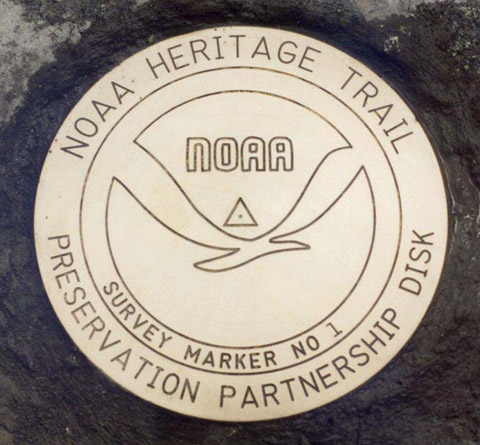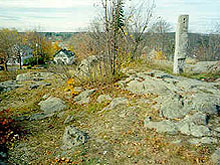 Lewis and Clark Corps of Discovery Bicentennial
Lewis and Clark Corps of Discovery Bicentennial 2002 Winter Olympics – Salt Lake City
2002 Winter Olympics – Salt Lake City U.S. Center of Population: 2000
U.S. Center of Population: 2000 NOAA Heritage Trail: The Calais Observatory
NOAA Heritage Trail: The Calais Observatory Ocean in View! The Nation's Newest Nickel
Ocean in View! The Nation's Newest Nickel 100th Anniversary of the First Flight
100th Anniversary of the First Flight 50th Anniversary of the Fredericksburg Geomagnetic Center
50th Anniversary of the Fredericksburg Geomagnetic Center Fagatele Bay National Marine Sanctuary, American Samoa
Fagatele Bay National Marine Sanctuary, American Samoa Pago Pago Harbor, American Samoa
Pago Pago Harbor, American Samoa Kilauea Point National Wildlife Refuge, Hawaii
Kilauea Point National Wildlife Refuge, Hawaii Hassler Park
Hassler Park 100th Anniversary of the U.S. Forest Service
100th Anniversary of the U.S. Forest Service National Estuarine Research Reserve System
National Estuarine Research Reserve System Hawaiian Islands Humpback Whale National Marine Sanctuary
Hawaiian Islands Humpback Whale National Marine Sanctuary
NOAA Heritage Trail: The Calais Observatory
On July 2, 2005, the first "Preservation Partnership" disk was set on the NOAA Heritage Trail at the site of the Calais Observatory in Calais, Maine. The Observatory was established in 1857 by one of NOAA's predecessor agencies, the Coast and Geodetic Survey, as part of the United State's Telegraphic Longitude Observatory network.

On July 2, 2005, the first "Preservation Partnership" disk was set on the NOAA Heritage Trail at the site of the Calais Observatory in Calais, Maine. The Calais Observatory, established in 1857, helped define Greenwich, England, as the zero point for the establishment of worldwide longitude values—the ultimate reference point for the planet.
The Preservation Partnership disks are part of NOAA's Heritage Trail Commemorative Mark Program, which recognizes significant sites or places that represent NOAA's or the nation's heritage. The Calais Observatory was established by one of NOAA's predecessor agencies, the Coast and Geodetic Survey, as part of the United States' Telegraphic Longitude Observatory network.

Ruins in Calais, Maine where the Coast and Geodetic Survey's Calais Observatory once stood. The site was last used by the Coast and Geodetic Survey in 1895. Image courtesy of Harold Nelson.
In compliance with President George W. Bush's Preserve America Executive Order, NOAA is stepping up efforts to inventory, preserve, and protect historic resources in the agency's care, from shipwrecks to historic buildings. The goals of the Executive Order include greater shared knowledge of the nation's past, strengthened regional identities and local pride, increased local participation in preserving the country's cultural and natural heritage assets, and support for the economic vitality of our communities.
Historic Reference
On December 16, 1866, the Calais Observatory marked the final piece of the first successful transatlantic telegraphic longitude determination. This was a tremendous advance for the transfer of accurate time across the Atlantic Ocean. It provided for the precise determination of longitude at the Harvard Observatory in Massachusetts, relative to Britain's Greenwich Observatory, increasing longitude accuracy throughout North America. The achievement was a major step in ultimately defining Greenwich as the zero point for the establishment of worldwide longitude values, affecting all nations.
- Designation: Not yet in database
- PID: Not yet in database
- Year: 2005
- Location: Calais Observatory, Calais, Maine
- Latitude/Longitude: Not yet in database
- Event Commemorated: First site on the NOAA Heritage Trail
Related Web Sites:
NOAA Commemorates Nation's Heritage with Marker Ceremonies
NOAA and the Preserve American Initiative
